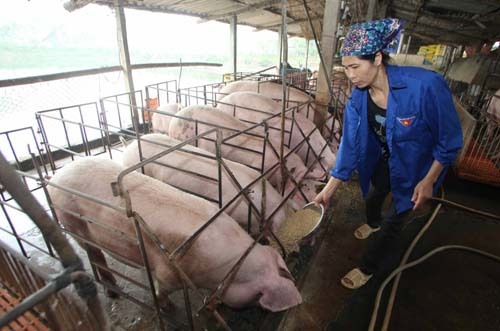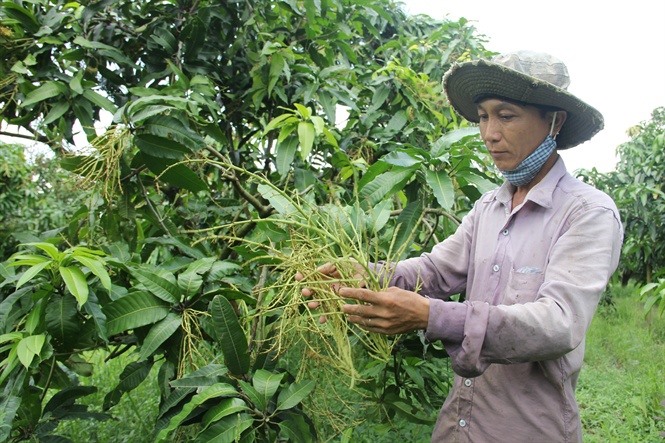
 |
| A pig farm in Duy Tiên District, Hà Nam Province — Photo kinhtenongthon.com.vn |
HÀ NỘI — Newer farming villages are more polluted and witness higher risks to human and animal health than traditional farms, according to research released today in Hà Nội.
The results came from a project on the health of human and animals in intensive livestock farming and traditional farming areas (ECOMORE) conducted by the National Institute of Hygiene and Epidemiology.
The research was carried out in 526 households, including 172 families with pig farms in Duy Tiên District, Hà Nam Province, from 2013-15.
The research determined that the proportion of households that have pigs with health problems in developed livestock farming villages was higher than in traditional farm villages.
In developed livestock farming villages, the proportion of pigs with disease symptoms reached 29,5%, while the rate of dead pigs was found to be 14,3 per cent, compared to 12.9 per cent and 1.6 per cent, respectively, in traditional farm villages.
“The proportion of households that have pigs with sicknesses in developed livestock farming villages are higher than the traditional farming villages. For example, the rate of households that have Leptospirosis infected pigs was 14 per cent in developed farming villages, compared to 8.5 per cent on traditional farms,” said project officer Nguyễn Thị Thi Thơ.
The report further noted that the environment in developed farming villages was more polluted than in traditional farm villages. The ecoli bacteria infection rate in vegetables was found to be 51 per cent in developed farming households, in comparison with 31 per cent in traditional farm homes. Major sources of pollution came from pig and human waste.
“Knowledge of transmission, disease prevention, arranging housing, sanitation, and animal disease prevention in people in traditional farming areas are better than in developed livestock breeding areas,” added Thơ.
The report also noted that there was no significant difference in the self-recorded health problems of communities in the two groups. People in the working age group (15- 55 years) and agricultural workers had higher rates of health problems, than did others.
The research further recommended measures to improve guidelines on preventive measures for those in occupations related to livestock and agriculture, and to practice biosecurity livestock husbandry, particularly in areas of high-density livestock farming, as well as research on diseases transmitted from animals to humans.
The health ministry’s Preventive Medicine Department deputy director, Đặng Quang Tấn, said that outcomes from the project would provide an important foundation for policy makers to develop appropriate policies on poultry farming practices, in efforts to minimise risks of disease transmission from animals to humans. — VNS





















